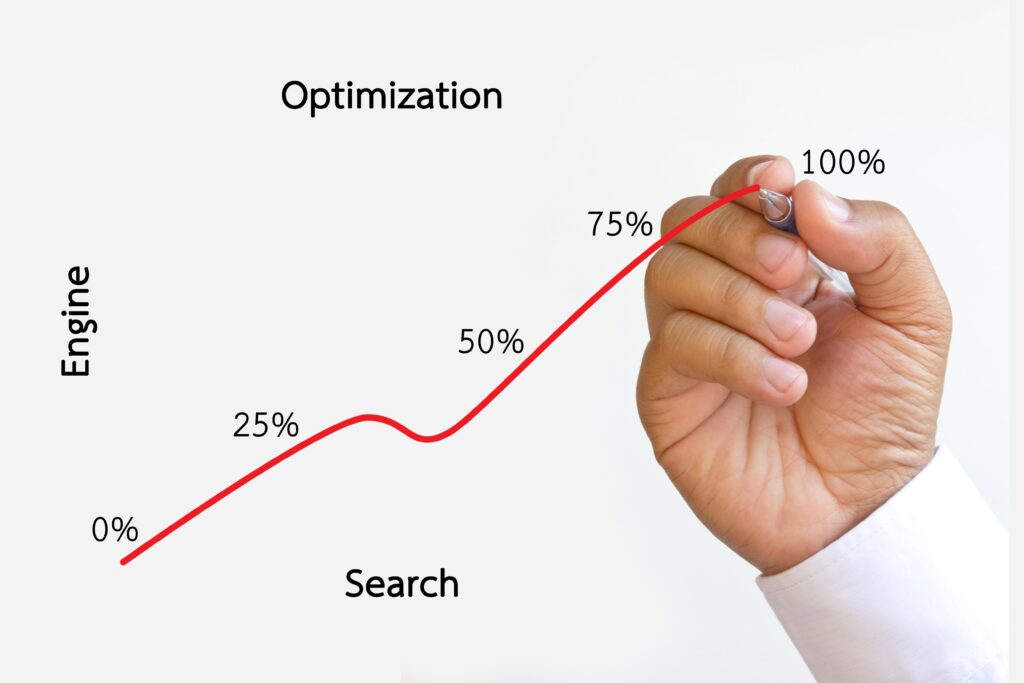Top 10 Local SEO Tools for Albany NY Entrepreneurs: Albany Web Development Guide

Local buyers rarely scroll past the first page of results—and they almost always start on mobile. That means your Albany business needs a search strategy that wins visibility in the local map pack, drives high-intent calls, and turns website visitors into appointments. The fastest path to that outcome is a smart mix of proven tools, tight web development, and a clear plan for execution.
This guide breaks down the top 10 Local SEO tools and resources Albany and Upstate NY business owners can rely on right now. You’ll learn how to pick the right stack for your goals, avoid costly mistakes, and build a system that compounds results month after month. If you’d rather skip the guesswork, Powerful Media Solutions offers a practical, results-first approach to local search and conversion-focused websites.
1. Why Local SEO Matters for Albany Small Businesses

Local SEO is the art and science of being found by nearby customers at the exact moment they’re searching for what you offer. For Albany, Schenectady, Troy, Saratoga, and the rest of Upstate NY, local search drives the majority of discoverable, high-intent demand—especially on mobile and voice search.
- Local Pack visibility = phone calls, direction requests, walk-ins, and form submissions.
- Searchers trust top results. Earning consistent reviews and accurate listings builds that trust.
- Organic traffic converts better than most paid channels when your pages match local intent.
In short: Local SEO is not just rankings—it’s your most reliable channel for predictable, profitable leads.
2. Understanding the Role of Web Development in Local SEO
Local rankings and conversions are built on technical foundations. Site speed, mobile responsiveness, crawlability, structured data, and clean information architecture determine how easily Google can understand—and reward—your site. Conversion design (clear CTAs, fast forms, click-to-call, appointment booking) turns that traffic into revenue.
With the right albany web development partner, you can remove technical blockers, implement robust schema, and ship landing pages that speak directly to geographic and service intent. That’s how you win the map pack and organic listings while lowering your cost per lead.
For deeper guidance on choosing a site partner, see this article on why the right web designer matters and this breakdown of what your website should do for your business.
3. How albany web development Powers Better Local Visibility

Modern Local SEO depends on your code, content structure, and site speed as much as your keywords. Here’s how development best practices compound results:
- Performance: Sub-2.5s Largest Contentful Paint (LCP) and strong Core Web Vitals improve rankings and UX.
- Structured data: LocalBusiness schema, service pages, FAQs, and review markup enhance relevance and can earn rich results.
- Indexation: Clean sitemaps, robots directives, and internal links help search engines crawl what matters.
- Localization: City/service landing pages (built with reusable components) capture more long-tail local queries.
- Conversion: Click-to-call, sticky CTAs, and fast forms lift lead volume from the same traffic.
4. Top 10 Local SEO Tools and Resources for Albany Entrepreneurs
Below are the most effective tools used by high-performing local businesses. For each tool/resource, you’ll see what it does, how to use it, and a quick pros/cons snapshot.
1) Google Business Profile (GBP)
Summary: Your most important local asset. Controls your map listing, reviews, Q&A, photos, posts, and service areas.
Key features: Profile editing, category selection, Services/Products, Posts, Messaging, Booking integrations, Attributes, and Insights (calls, views, direction requests).
Use cases: Win the Local Pack, collect and respond to reviews, share promotions, track engagements, and manage multi-location data.
| Pros | Cons |
|---|---|
| Free; massive visibility; review engine | Verification hurdles; policy-sensitive; limited analytics depth |
2) Google Search Console (GSC)
Summary: Direct insight from Google on how your site is crawled, indexed, and clicked.
Key features: Performance reports (queries, pages, countries, devices), Index Coverage, Core Web Vitals, URL Inspection, Sitemaps.
Use cases: Spot ranking opportunities, fix indexing issues, measure CTR by page, test structured data, and validate page improvements.
| Pros | Cons |
|---|---|
| Authoritative data; free; essential diagnostics | Data sampling; limited local filter granularity |
3) Google Analytics 4 (GA4)
Summary: Tracks how users arrive and convert, letting you prove ROI from Local SEO.
Key features: Events-based tracking, conversion setup, attribution, audiences, UTM tagging, and customizable reports.
Use cases: Connect traffic to leads; measure calls, forms, bookings; compare channel performance; forecast revenue.
| Pros | Cons |
|---|---|
| Flexible; detailed attribution; free | Learning curve; setup required for meaningful insights |
4) Local Rank Trackers
Summary: Software that monitors how you rank in specific ZIP codes and neighborhoods. Examples include BrightLocal, Whitespark, Semrush, and Ahrefs.
Key features: Geo-grid views, daily/weekly updates, Local Pack tracking, competitor comparisons, shareable reports.
Use cases: Visualize map coverage, validate improvements, prioritize pages and locations, prove ROI to stakeholders.
| Pros | Cons |
|---|---|
| Location-precise tracking; clear visuals | Subscription cost; data overload without a plan |
5) Citation Management Suites
Summary: Tools that push your business information (NAP: Name, Address, Phone) to directories for consistency. Examples include Moz Local, Yext, and Semrush Listings.
Key features: Bulk listing sync, duplicate suppression, category selection, review monitoring, and data aggregator distribution.
Use cases: New businesses, address changes, multi-location brands, and anyone with messy or inconsistent citations.
| Pros | Cons |
|---|---|
| Saves time; improves trust via consistency | Subscription costs; not a substitute for strong content |
6) Technical SEO Auditors
Summary: Crawling tools like Screaming Frog or Sitebulb simulate how search engines read your site, surfacing issues that block rankings.
Key features: Crawl errors, broken links, redirects, thin/duplicate content, metadata gaps, and image optimization opportunities.
Use cases: Pre-redesign audits, quarterly health checks, or diagnosing ranking drops.
| Pros | Cons |
|---|---|
| Deep diagnostics; speeds up fixes | Requires SEO knowledge to prioritize issues |
7) Page Speed & Core Web Vitals Tools
Summary: Measure and improve performance with PageSpeed Insights, Lighthouse, and GTmetrix.
Key features: Field/lab data, LCP/CLS/INP metrics, waterfall charts, and prioritized recommendations.
Use cases: Boost Local Pack and organic rankings, reduce bounce, improve conversions from mobile traffic.
| Pros | Cons |
|---|---|
| Free core tools; direct ranking impact | Requires dev changes; can be time-consuming |
8) Schema Markup & Structured Data Generators
Summary: Tools that help you implement LocalBusiness schema, Services, FAQ, and Review snippets using JSON-LD.
Key features: Templates for common schema types, validation, and copy/paste snippets.
Use cases: Enhance relevance, support rich results, and help Google understand your offerings and service area.
| Pros | Cons |
|---|---|
| Clarity for search engines; competitive edge | Incorrect markup can cause errors; ongoing maintenance |
9) Review & Reputation Management Platforms
Summary: Systems like GatherUp or Birdeye streamline review requests, monitor feedback, and centralize responses.
Key features: Automated SMS/email requests, response templates, alerts, and analytics.
Use cases: Improve star ratings, increase review velocity, and build social proof in the Local Pack.
| Pros | Cons |
|---|---|
| Drives trust and clicks; scalable outreach | Monthly cost; requires consistent team follow-through |
10) Local Content & Keyword Research Tools
Summary: Use Google Keyword Planner, Google Trends, and People Also Ask insights to uncover local intent and seasonal demand.
Key features: Search volume estimates, topic clustering, question mining, and seasonal patterns.
Use cases: Build city/service landing pages, FAQs, and blog posts that match local questions and buyer intent.
| Pros | Cons |
|---|---|
| Free/low cost; directly informs content | Requires editorial process; volumes can be directional |
5. How to Choose the Right Tools for Your Specific Business Goals
The best stack depends on your goals, budget, and team capacity. Use this quick matrix to prioritize:
| Primary Goal | High-Priority Tools | Notes |
|---|---|---|
| Show up in the Local Pack | GBP, Local Rank Tracker, Citation Suite | Dial in categories, service areas, reviews, and NAP consistency. |
| Increase calls and bookings | GA4 (conversions), Page Speed tools, Review Platform | Speed and social proof boost conversion rate. |
| Fix technical issues | GSC, Technical Auditor, Page Speed tools | Address indexation, CWV, and crawl barriers first. |
| Expand into new neighborhoods | Local Rank Tracker, Content Research, Schema | Build localized pages and track geo coverage. |
When in doubt, start with foundational systems (GBP, GSC, GA4) and a fast, conversion-first site engineered through reliable albany web development. Then layer on rank tracking, citations, and review automation.
6. Common Mistakes Albany Business Owners Make with Local SEO

- Incomplete Google Business Profile: Missing categories, services, or photos limit visibility.
- Inconsistent NAP data: Old addresses or phone numbers confuse search engines and customers.
- Slow, non-mobile pages: Core Web Vitals issues hurt both rankings and conversions.
- Thin city/service pages: Doorway-style content won’t perform; local pages need depth and usefulness.
- No review strategy: Reviews stall without a system; velocity and quality both matter.
- Ignoring analytics: Without GA4 and GSC, you’re guessing—not optimizing.
- One-and-done mindset: Local SEO compounds with ongoing publishing, updates, and link earning.
7. How a Strategic Partner Amplifies Your Local Search Strategy
Local SEO works best when marketing and development operate as one team. A strategic partner can:
- Audit your technical foundations and ship fixes quickly.
- Build modular, reusable page components for each city/service.
- Stand up analytics and call tracking to prove ROI.
- Implement schema, local link outreach, and review campaigns.
- Report in plain English with recommendations you can act on.
If you’re weighing DIY vs. done-for-you, consider a hybrid approach: retain ownership of reviews and content input while a specialist handles technical SEO, page speed, and complex architecture.
8. FAQs
What is local SEO?
Local SEO is the process of optimizing your online presence so nearby customers find and choose your business. It focuses on Google Business Profile, map rankings, localized content, reviews, and consistent business information across the web.
How does web development impact SEO?
Development determines how fast, accessible, and understandable your site is to both users and search engines. Clean code, strong Core Web Vitals, structured data, and logical internal links all make it easier to rank—and easier for visitors to convert.
How long before I see results?
Quick wins (like completing your GBP, adding reviews, and fixing technical blockers) can move the needle in weeks. Building authority with content and links typically compounds over 3–6 months, with sustained growth beyond that.
What platforms help track local SEO?
At minimum, use Google Business Profile for insights, Google Search Console for visibility, Google Analytics 4 for conversions, and a local rank tracker for geo-specific performance. Add citation tools, review platforms, and speed testing as needed.
9. Actionable Checklist for Implementing a Local SEO Plan
- Claim/verify Google Business Profile; fill out every field and add 20+ photos.
- Choose primary/secondary categories and list all services/products.
- Set up GA4 conversions (calls, forms, bookings) and UTM tracking.
- Connect and submit sitemaps in Google Search Console.
- Run a technical crawl; fix broken links, redirects, and indexation issues.
- Improve Core Web Vitals; compress images, preload key assets, optimize hosting/CDN.
- Implement LocalBusiness, Service, and FAQ schema where relevant.
- Create or upgrade city/service landing pages with unique value and proof.
- Start a review request program; reply to every review.
- Build citations; correct NAP inconsistencies and suppress duplicates.
- Track rankings by neighborhood; iterate pages and internal links.
- Report monthly on calls, forms, bookings, and revenue—not just traffic.
| Step | Owner | Tool | Status |
|---|---|---|---|
| GBP optimization | Marketing | GBP | Not started / In progress / Done |
| Core Web Vitals fixes | Dev | PageSpeed, Lighthouse | Not started / In progress / Done |
| Review program launch | CS/Front Desk | Review Platform | Not started / In progress / Done |
| Neighborhood rank tracking | Marketing | Rank Tracker | Not started / In progress / Done |
| Content calendar (city/service) | Marketing | Keyword Tools | Not started / In progress / Done |
| Analytics + ROI dashboard | Marketing/Owner | GA4, GSC | Not started / In progress / Done |
Tip: Assign technical tasks to a reliable albany web development resource so your team can focus on reviews, content, and customer service.
10. Long-Term Benefits of Investing in Local SEO and Quality Web Development
- Compounding visibility: Each new review, page, and citation builds authority.
- Higher conversion rates: Fast, trustworthy pages turn more clicks into calls and bookings.
- Lower cost per lead: Organic demand reduces dependence on paid ads.
- Defensible moat: Competitors can copy ads; they can’t easily replicate years of trust and content.
- Better business intelligence: GA4 and GSC data guide better decisions beyond marketing.
Conclusion
Winning local search in Albany isn’t about one magic tool—it’s about combining the right stack with a fast, conversion-first site and a consistent publishing and review engine. Start with Google Business Profile, GSC, and GA4; add rank tracking, citations, and review automation; and keep improving performance, schema, and local content. When you want a proven partner to architect and execute that plan with you, Powerful Media Solutions can help you turn visibility into measurable growth.
